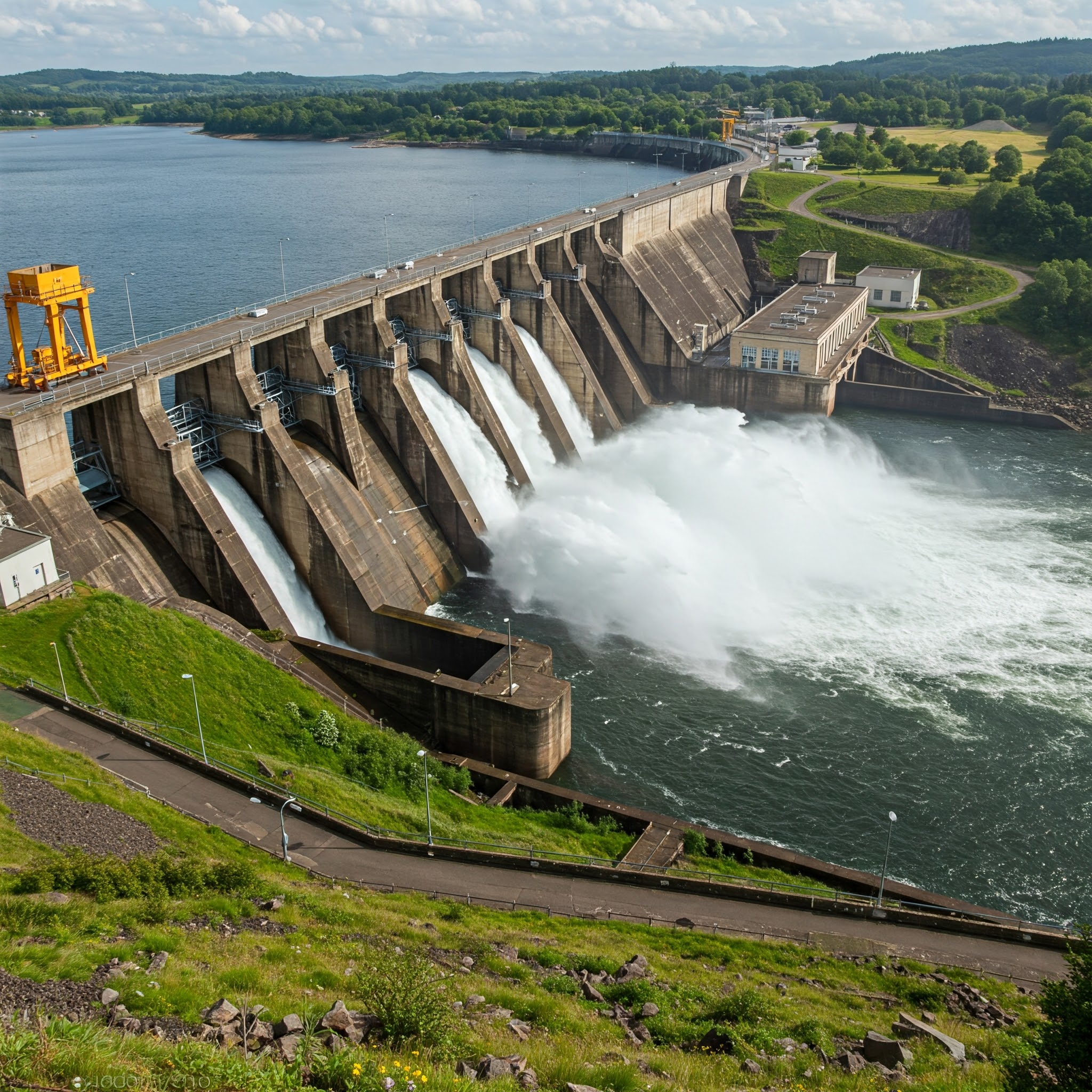Hydroelectric Power
Hydroelectric Power Advantages and Disadvantages | |
|---|---|
| Advantages | Disadvantages |
|
|
 Hydroelectric power, also called hydropower, is a form of renewable energy that uses the movement of water to generate electricity. It typically involves harnessing the kinetic energy of flowing or falling water, such as in rivers or from man-made reservoirs, to spin turbines connected to generators. Hydroelectric power is a key component of the global energy mix, offering significant benefits in terms of sustainability and reliability, but it also presents challenges that must be carefully managed to minimize environmental and social impacts.
Hydroelectric power, also called hydropower, is a form of renewable energy that uses the movement of water to generate electricity. It typically involves harnessing the kinetic energy of flowing or falling water, such as in rivers or from man-made reservoirs, to spin turbines connected to generators. Hydroelectric power is a key component of the global energy mix, offering significant benefits in terms of sustainability and reliability, but it also presents challenges that must be carefully managed to minimize environmental and social impacts.
How a Hydropower Plant Works
Water Flow - Water is directed through turbines, often by releasing it from a dam or allowing it to flow naturally in a river.
Turbines - The force of the moving water spins the blades of a turbine.
Generator - The turbine is connected to a generator, where the mechanical energy of the spinning turbine is converted into electrical energy.
Transmission - The generated electricity is then transmitted via power lines to homes, businesses, and industries.
Hydropower Plant Types
- Run-of-River - Utilizes the natural flow of a river, without significant storage.
- Storage (Reservoir) - Uses a dam to store large amounts of water in a reservoir, releasing it as needed to generate power.
- Pumped Storage - Pumps water to a higher elevation during periods of low demand, then releases it to generate electricity during peak demand.
Hydropower is one of the oldest and most widely used forms of renewable energy, contributing significantly to global electricity generation.

